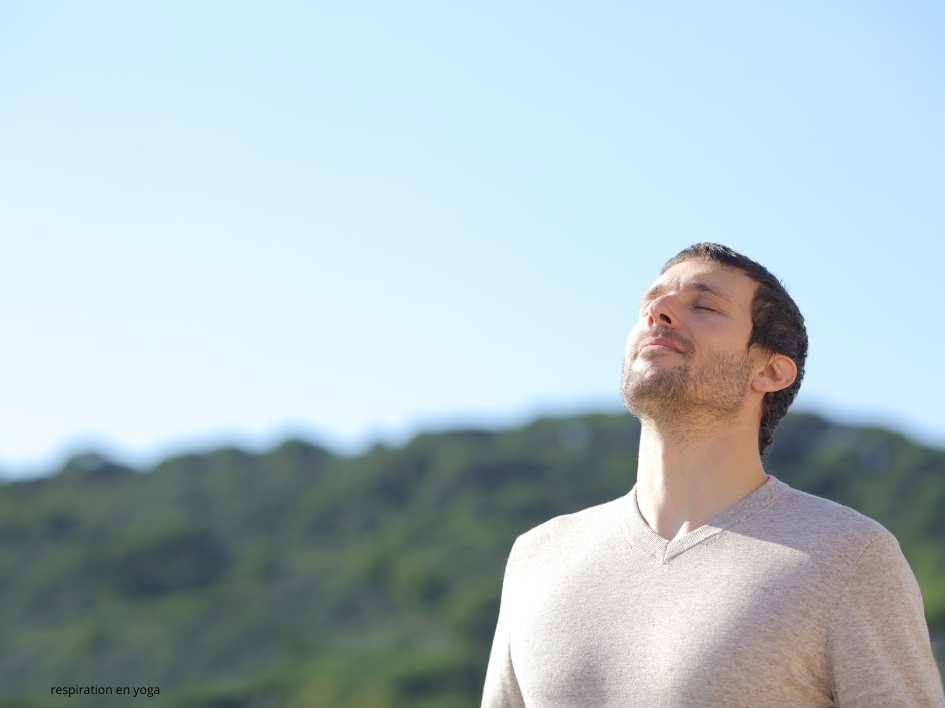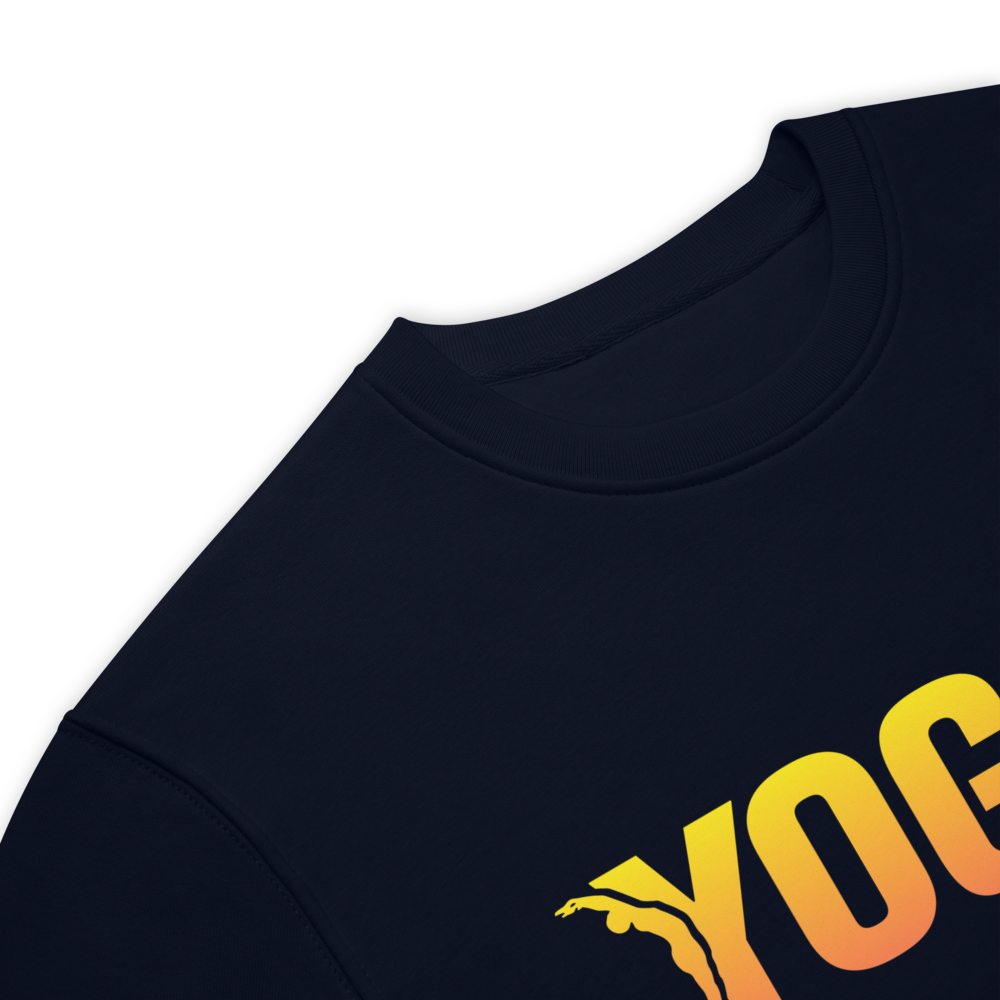Breathing in Yoga: The Art of Mastering Vital Energy

Breathing, an act we perform thousands of times a day without thinking about it, becomes a conscious and powerful practice when we integrate it into yoga. In the yogic tradition, breathing is not limited to a simple gaseous exchange between the air and our lungs, but it is seen as the means of manipulating prana , this vital energy that circulates within us. The control of this energy through breathing, known as pranayama , is a central pillar of yoga, as much as postures (asanas) or meditation.
The Importance of Breathing in Yoga
The fundamental role of breathing
Yoga, much more than a physical discipline, is a journey towards a greater awareness of oneself and the universe. At the heart of this exploration is breathing. For yogis, breathing is much more than a biological process. It is the gateway between the body and the mind, a bridge that allows us to create inner harmony.
Breathing, when mastered, helps to stabilize the mind and calm mental fluctuations, an essential condition for the practice of yoga. This means that each breath becomes a conscious act, a moment of full presence. Each inhalation fills not only the lungs with air, but also the entire body with energy, while each exhalation allows accumulated tensions to be released.
In yoga, this conscious breathing becomes a tool for transformation. It guides movements, helps maintain postures, and acts as an anchor for the mind. Breathing gives rhythm to the practice of yoga, connecting movements to inner energy and thus promoting a deeper and more meditative experience.
The connection with Prana
To understand the importance of breathing in yoga, one must first understand the concept of prana. Prana, often translated as "vital breath," is the energy that flows through us and keeps us alive. In the teachings of yoga, prana is everywhere—in the air we breathe, the food we eat, and even the thoughts we entertain. By controlling the breath, we control the flow of prana in our body.
Breathing then becomes much more than just a lung activity; it becomes a tool to control and direct prana, and thus influence our physical, emotional and spiritual state. This process of managing energy through breathing is known as pranayama.
Pranayama is therefore an essential practice in yoga, because it allows us to release energy blockages, revitalize the body, and soothe the mind. By consciously controlling our breathing, we become able to channel this vital energy towards the parts of our body or mind that need it.
Breathing as an anchor
In the practice of yoga, breathing becomes an anchor. When the mind wanders, lost in thoughts of the past or future concerns, returning to the breath helps bring awareness back to the present moment. This anchoring is essential, especially when practicing more complex asanas or meditating.
Conscious breathing also allows you to better feel the body, detect tensions, and adapt the practice accordingly. For example, in a difficult posture, the natural tendency is to hold your breath, which only accentuates the tension. By becoming aware of breathing, you can release these tensions and allow the body to relax in the posture.
The different breathing techniques in yoga
Presentation of Pranayamas
The term pranayama is composed of two Sanskrit words: "prana," meaning vital energy or breath, and "ayama," meaning to expand or control. Pranayama is literally the control or expansion of the breath. It is one of the eight limbs of yoga defined by Patanjali in the Yoga Sutras, and is considered a means of purifying the body and mind.
There are many different pranayama techniques, each with specific effects on the body and mind. Some techniques are aimed at calming the nervous system and quieting the mind, while others are more energizing and energizing. In this section, we will explore some of the most popular breathing techniques in yoga.
Example of breathing: Ujjayi and kapalabhati
Ujjayi Breathing
Ujjayi breathing, often called the “victorious breath,” is one of the most commonly practiced breathing techniques in yoga. It is particularly used in dynamic yoga styles like Ashtanga and Vinyasa because it helps synchronize the breath with the movement.
The uniqueness of Ujjayi breathing lies in the gentle sound produced by gently contracting the throat while inhaling and exhaling. This sound, often compared to that of the ocean, has a calming effect on the mind and helps maintain concentration during the practice.
Benefits of Ujjayi Breathing:
- Improved Concentration : The sound of Ujjayi breathing serves as a focal point for the mind, helping to stay focused on the practice and avoid distractions.
- Energy Regulation : By extending the duration of each breath, Ujjayi breathing allows for better control of vital energy (prana) in the body, thus avoiding fatigue or dispersion of energy.
- Soothing the nervous system : This slow, controlled breathing activates the parasympathetic nervous system, responsible for relaxation and regeneration.
If you want to know more about this technique and how to practice it, don't hesitate to check out our full article on Ujjayi breathing.
Breathing of Fire (Kapalabhati)
Breath of Fire, also known as Kapalabhati, is a particularly energizing pranayama technique. Unlike Ujjayi breathing, which is rather gentle and calming, Kapalabhati aims to energize the body and purify the mind.
This technique consists of a series of rapid, powerful exhalations, followed by short, passive inhalations. It is often practiced in the morning to awaken the body and mind, or before a meditation session to purify the thoughts.
The benefits of Breath of Fire:
- Clears the airways : Rapid exhalations help clear the airways, which helps oxygenate the body more efficiently.
- Energy Boost : Kapalabhati stimulates the sympathetic nervous system, thereby increasing physical and mental energy.
- Elimination of toxins : By increasing blood oxygenation, this technique helps eliminate toxins from the body.
For a detailed practice of this technique and its energetic effects, discover our article on the breathing of fire .
Other Pranayama Techniques
Besides Ujjayi and Kapalabhati, there are many other pranayama techniques, each with its own benefits.
- Nadi Shodhana (Alternate Nostril Breathing) : This technique aims to balance both sides of the brain and calm the mind by alternating breathing between the two nostrils.
- Bhramari (Bee Breath) : By producing a humming sound while exhaling, this technique calms the mind and reduces stress.
- Bhastrika (Forge Bellows) : Similar to Kapalabhati, but with equal inhalations and exhalations, this technique increases vital energy.
Each pranayama technique can be adapted according to individual needs and practice goals. Some are calming and relaxing, while others are revitalizing and energizing.
The Overall Benefits of Yoga Breathing
Stress reduction and emotion management
One of the most immediate and appreciated effects of conscious breathing in yoga is its ability to reduce stress. Stress is often linked to shallow, rapid breathing, which activates the sympathetic nervous system, responsible for the "fight or flight" response. By practicing deep, slow breathing, as used in many pranayama techniques, we instead activate the parasympathetic nervous system, responsible for relaxation and regeneration.
Conscious breathing directly affects the brain, particularly the amygdala, the region associated with the stress response. By calming this part of the brain, breathing helps you better manage your emotions and reduce symptoms of anxiety and depression.
Additionally, yoga breathing helps cultivate mindfulness. By focusing attention on the breath, one becomes more aware of one's thoughts and emotions without being overwhelmed by them. This allows one to step back from stressful situations and respond in a more calm and thoughtful manner.
Improved concentration and meditation
Breathing in yoga is not only a way to calm the mind; it is also a powerful tool for improving focus. By synchronizing the breath with the movements, as in Vinyasa or Ashtanga, we create a state of meditation in motion. Each movement is guided by the breath, which allows us to remain present and focused throughout the practice.
In meditation, breathing often becomes the focus. By focusing on the breath, the mind is trained to remain focused on a single point, which helps to reduce distractions and deepen the meditative state.
Increased vitality and physical endurance
Yoga breathing not only calms the mind; it also has profound physical effects on the body. Deep, conscious breathing increases the supply of oxygen to cells, which improves overall vitality and supports physical endurance.
In addition, regular practice of pranayama techniques strengthens the respiratory muscles, especially the diaphragm, which improves lung capacity and breathing efficiency. This translates into better physical performance, whether in yoga practice or in other sports activities.
Finally, by regulating the flow of prana in the body, conscious breathing promotes better energy balance, which helps prevent fatigue and maintain a constant energy level throughout the day.
Conclusion
Breathing is more than just a physiological act; it is the foundation of yoga practice. By mastering the different techniques of pranayama, you can not only improve your physical practice, but also cultivate a calmer and more centered mind. Whether it is to reduce stress, increase vitality or deepen your meditation, conscious breathing is an essential key to unlocking the full potential of yoga.
Feel free to explore specific techniques such as Ujjayi Breathing and Breath of Fire (Kapalabhati) in more depth to enrich your daily practice. These techniques, although different, share a common goal: to harmonize the body and mind through breath control. Incorporate them into your yoga routine and see how they transform not only your practice, but also your daily life.


















